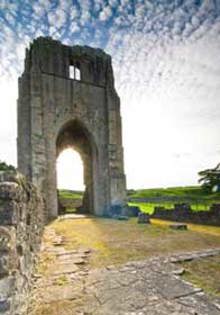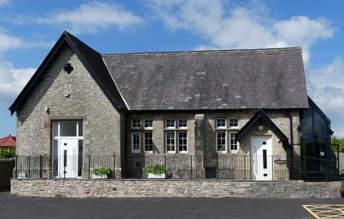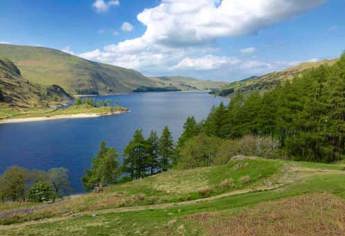Places of interest in and around Shap
Shap Abbey (English Heritage) One mile west of Shap, are the ruins of Shap Abbey. Founded in the late 12th century in the secluded valley of the River Lowther, the abbey was built by the Premonstratensian order of canons. It was one of the last to be closed in the dissolution of the monasteries in 1540. Information panels illustrating daily monastic life guide you around the impressive 15th century tower and other remains. Admission is free and there is parking close by.
the late 12th century in the secluded valley of the River Lowther, the abbey was built by the Premonstratensian order of canons. It was one of the last to be closed in the dissolution of the monasteries in 1540. Information panels illustrating daily monastic life guide you around the impressive 15th century tower and other remains. Admission is free and there is parking close by.
Keld Chapel (National Trust) This stone medieval chapel is situated in the hamlet of Keld and can be reached by road or public footpath. Keld Chapel dates back to the 16th century and is thought to have originally been a chantry for Shap Abbey. Keld itself is a charming hamlet with the River Lowther and open moorland beyond.
St Michael’s Church was built in 1144 (its origins are reputed to date back to the 9th Century). The Norman arcade and a 12th century font are two of the early features that survive. The tower dates from the reign of George IV. In 1898-9 the nave and chancel were largely rebuilt. Although predating Shap Abbey, the church was administered by Canons from the abbey until the Dissolution. The Church contains a pink granite font plus some fine examples of stained glass windows and wooden carving. The Old Courthouse was built as a school in 1880 and served this purpose until 1962. Later is was used as a Magistrates Court and more recently as a Library and Community Centre, which now includes a Visitor information Point and Gallery featuring art exhibitions and local crafts. For more information visit the Old Courthouse website.
The Old Courthouse was built as a school in 1880 and served this purpose until 1962. Later is was used as a Magistrates Court and more recently as a Library and Community Centre, which now includes a Visitor information Point and Gallery featuring art exhibitions and local crafts. For more information visit the Old Courthouse website.
The Market Cross - Heritage Centre This building with its curious windows and rounded arches dates from 1687. It is owned by Shap Local History Society and is home to an extensive archive.
Haweswater Reservoir lies about 8 miles to the west from the village. Construction of the dam started in the 1930s. The valley of Mardale was flooded to supply water to Manchester with small rural communities abandoned in the process. After prolonged dry weather the outline of former buildings can be seen. Prior to the flooding the coffins and memorials from Mardale Churchyard were re-interred to a dedicated area in the Upper Churchyard at Shap. The reserve encompasses a variety of landscapes which all provide different habitats for an abundance of flora and fauna. Regular ‘Wild Haweswater’ events are organised by the RSPB.
former buildings can be seen. Prior to the flooding the coffins and memorials from Mardale Churchyard were re-interred to a dedicated area in the Upper Churchyard at Shap. The reserve encompasses a variety of landscapes which all provide different habitats for an abundance of flora and fauna. Regular ‘Wild Haweswater’ events are organised by the RSPB.




